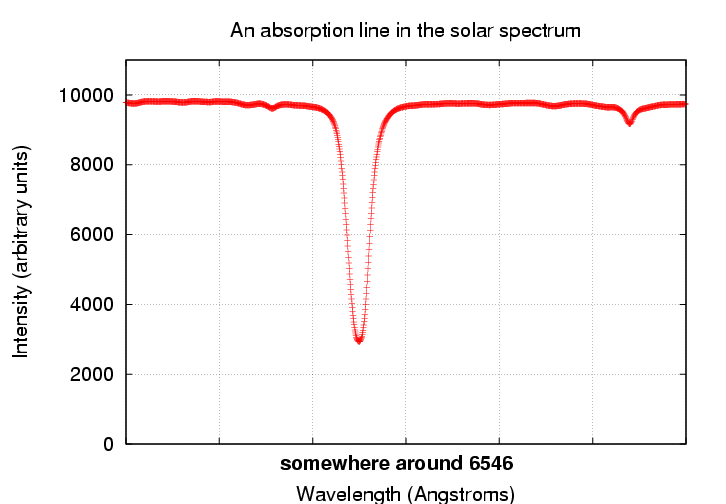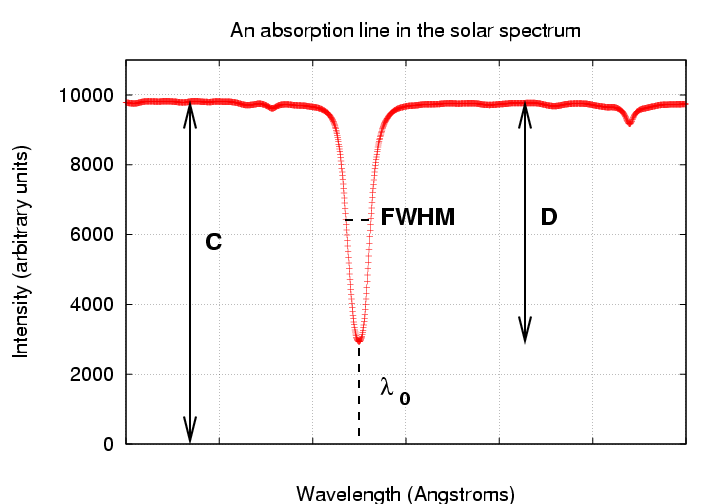
 Copyright © Michael Richmond.
This work is licensed under a Creative Commons License.
Copyright © Michael Richmond.
This work is licensed under a Creative Commons License.
The spectrum of the Sun, like that of most stars, includes many absorption lines. Here's one example:

The measurements on which this graph is based are taken from the BASS2000 website. I have extracted a small section of the data from one spectrum. You can grab this datafile at
6545 9779
6545.002 9777
6545.004 9776
6545.006 9775
where
Task 1: Download the datafile to your computer
and make a simple plot that resembles the
one above.
We can describe this line quantitatively with 4 parameters:


Task 2: Look at your plot of the data to
estimate each of the four parameters by eye.
Write them down.
Task 3: Using your estimates for the parameters,
generate a model dataset.
Create a new plot which shows both
the data and your model.
One way to describe the degree to which some model fits a dataset is to calculate a quantity which is usually called the "chi-squared" statistic.

Task 4: Calculate the value of chi-squared
using your model.
Use only measurements between
6546.12 and 6546.38 Angstroms.
You may assume that the uncertainty in
each measurement of intensity is 0.5 units,
and the uncertainty in each measurement
of wavelength is negligible.
The chi-squared value, by itself, doesn't tell you all that much about the match between data and model. In order to see if the match is good, you need to do a little extra work.
First, compute the number of degrees of freedom in the problem:

Next, compute the reduced chi-squared statistic like so:

For situations in which the number of degrees of freedom is large, the value of the reduced chi-squared statistic ought to be close to 1.0 .... if
Task 5: Calculate the value of the reduced chi-squared
statistic using your model.
Is it close to 1?
If not, why not? Which of the possibilities
listed above is most likely?
One possibility here is that your eyeball estimates of the parameters aren't very good. Is it possible to do better? Yes, probably. How could you do a better job? Is it possible to do a "best" job, in fact?
Task 6: Derive better values for the
4 parameters in your model.
Explain how you did it.
Use the improved parameters
to compute the reduced chi-squared
statistic again.
What is it? What can you conclude?
This page maintained by Michael Richmond. Last modified Sep 11, 2008.
 Copyright © Michael Richmond.
This work is licensed under a Creative Commons License.
Copyright © Michael Richmond.
This work is licensed under a Creative Commons License.